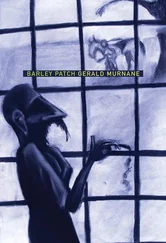She who had lived on the far side of the creek was named Barbara. (She was the first of four of that name who had attracted him during his first twenty years. Three of the four were dark-haired, although the one that he had most often in mind while he wrote fiction had pale hair.) After her came someone whose name he never learned. He could recall having seen her only once, and she was probably unaware of his existence. Like the first of the four Barbaras, she and her family moved into his suburb and then out again within a year, although this was not uncommon at a time when many families rented rather than owned their homes. When he saw her, she was with her two young brothers in the dusty front yard of their weatherboard house. After more than sixty years, he recalls only an approximation of her face but he can readily visualise what he believes to be the exact shade of the newly painted weatherboards behind her: something between grey and turquoise. He learned long ago not to struggle to recall her face but to call to mind first the bluish grey of the old timber house and then to hold the rare shade in focus, as it were, until he not only caught sight of some or another detail of clear, pale skin or dark eyebrows but felt what he supposed was something of the impression that the actual face had made on him long before, during the few minutes while he had observed it. He learned in time that this feeling was sometimes available to him even when he was unable to recall the face that had first given rise to it, and often in later years he needed only to call up an image of blue-grey weatherboards in order to feel again as though he was sauntering past a certain shabby house on a hot afternoon in the mid-1940s, in an inland provincial city, was staring at a girl of about his own age who was pushing repeatedly a worn rubber car-tyre suspended from a tree-branch and serving as a swing for one of her two younger brothers, and was waiting for her to turn so that he could see her face.
If, in the further reaches of some or another remote corridor in an immense house of two or, perhaps, three storeys, and behind some or another door that remains mostly closed but in sight of a window overlooking some or another tract of far-reaching landscape of mostly level grassy countryside with low hills or a line of trees in the distance, a certain man at his desk, on some or another day of sunshine with scattered clouds, were to spurn the predictable words and phrases of the many writers of fiction who have reported of this or that male character that he once fell in love with this or that female character, and if that same man, after striving as neither I, the author of this sentence, nor even the most discerning reader of the sentence, have or has striven nor will ever strive, in late afternoon, and at about the time when the rays of the declining sun might have caused the pane in the window of his room to seem to a traveller on a distant road like a spot of golden oil, had found in his heart, or wherever such things are to be found, the words best fitted to suggest what he seemed to have felt long before, on a certain hot afternoon, in a distant inland city, and whether he had simply kept those words in mind or whether he had actually written them, either as notes for a work of fiction that he might one day write or as part of an actual work of fiction, then I do not doubt that the words would have been to the effect that a certain boy, a mere child, while he watched unobserved a certain girl, a mere child, whose name he did not know and who had almost certainly never had sight of him, wished for the means to inform her that he was worthy of trust.
He passed the house of grey-blue weatherboards every day on his way to and from school, and he seems to remember that he saw her once or twice more, but he has no memory of the dark-haired girl’s having looked even in his direction during the few months before she and her family moved whither he never knew. If she had attended his own school, matters might have gone differently between them, but he assumed that she walked every day to the distant state school by a route that did not cross his own. And yet he was not altogether content to remain unknown to her. The three or four unruly children in the shabby house next to his went also to the state school, and he recalls his confiding to two of them, a brother and a sister of about his own age, that the dark-haired girl in the grey-blue house was his girlfriend. What should have followed, according to the customs of that time and place, was the two confidants’ hurrying to tell the girl what they hoped would unsettle or even annoy her and afterwards bringing back to the boyfriend an exaggerated or false report meant to affect him likewise. When, after several days, he had heard nothing from the children his neighbours, he waylaid them and asked for details. He took their vague answers for lies and surmised that they had forgotten even to approach the dark-haired girl. He made no further effort to reach the girl, although he looked out for her whenever he passed the blue-grey house. He seems to recall as his chief regret that he had not enabled her to experience what would have been for him strangely satisfying: an awareness of the esteem of someone altogether unknown.

What I wrote in the seventh section of this work of fiction is no more than the merest beginnings of an account of the matter of point-of-view in fiction. During the years when I supposed that the writing of fiction was a craft and that a writer of fiction was obliged to strive continually to improve his or her craftsmanship, I read closely the first edition and then, nearly ten years later, the revised and expanded second edition of a bulky book almost wholly given over to a study of point-of-view in fiction, although the author hardly ever used that term, perhaps because it seemed to make too readily accessible a field of study that he, a professor in an American university, had made his life’s work. I have not looked into either book for nearly twenty years, but I still recall my studying several charts or diagrams towards the rear of the book, trying to learn from them the subtle distinctions between the many possible kinds of fictional narration. I found the charts or diagrams intimidating, but not nearly as much so as an arrangement of several concentric circles criss-crossed by six or seven axes and containing, at close intervals all around their circumference, the titles of fifty and more so-called classics of English literature, which arrangement I saw reproduced nearly thirty years ago in The Times Literary Supplement , which I used to get by airmail from England during the years when I supposed that a writer of fiction was obliged to be aware of the sorts of fiction being published in distant countries. The arrangement, as I call it, had been reproduced from a book that was reviewed respectfully and at great length in the surrounding columns. The book, which had been published by the press of a famous English university, was the English translation of a work by a renowned German scholar. His field, so to call it, was narratology, which was a word I had never previously come across. Although I could make little sense of the review, I found myself admiring the concentric circles and the axes and the dense array of fictional titles in the illustration. I got from the illustration a sense that the writing of fiction was not only a craft but that the endless-seeming difficulties that I experienced while planning and writing fiction might have been inevitable, given the complexity of my task. The narratologist, so to call him, had claimed to discover certain standards for measuring such matters as the seeming nearness of a fictional narrator to his or her characters; the seeming awareness of the fictional narrator that he or she is also a writer; or the amount that the fictional narrator claims to know over and beyond what the characters collectively know. These and several other supposedly measurable matters were represented on the illustrated diagram by the axes that transected the concentric circles. (I long ago forgot what the circles themselves were intended to represent.) The title of each of the fifty and more so-called classics was positioned where it was after the renowned scholar had presumably pored over the text (the original English or a German translation? I cannot recall) in a state of heightened alertness and with no more than a reader’s sensitivity to enable him to register each precise calibration on the several subtle narratological scales.
Читать дальше










